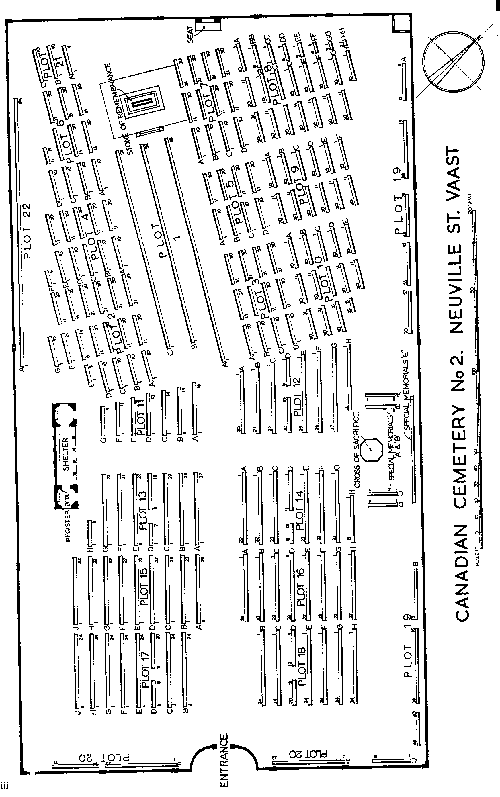

Louis Gordon Beckett was transferred to the 39th Battalion (Canadian Expeditionary Forces) on October 6th, 1916 (this Battalion was located in West Sandling, England). On October 7th, this soldier was promoted a rank to Lance Corporal but he reverted his rank to private at his own request. He was drafted to the 87th Battalion (the Canadian Grenadier Guards) on November 14, 1916 which was located in France. Louis Gordon Beckett was taken on strength of the 87th Battalion on November 15th and officially joined the unit on November 25th, 1916. A couple months later, Louis Gordon Beckett was appointed to Acting Lance Corporal with pay on February 17, 1917, then was confirmed the rank on April 7, 1917. Unfortunately, this soldier was killed in action on April 9, 1917. This day is significant because this was the day the Canadians won the battle of Vimy Ridge. Louis Gordon Beckett served a total of 485 days (1 year, 3 months, 29 days) in World War 1.
Louis Gordon Beckett is commemorated on Page 198 of the First World War Book of Remembrance.
This soldier is displayed in the Memorial Chamber of the Peace Tower in Ottawa on May 6th.
He is buried in the Canadian Cemetery No.2; Pas de Calais, France (his grave reference is I. A. 24). The location of the cemetery is about 2.5 kilometers north of the village of Neuville- St. Vaast. The village is about 6 kilometers north of Arras and one kilometer east of the main village from Arras to Bethune. The cemetery is on a spur road turning left from the road to Givenchy-en-Gohelle, about one kilometer South of the Canadian War Memorial at Vimy.


The Canadian Cemetery No.2
Courtesy of the Canadian Virtual War Memeorial
Louis Gordon Beckett is located in plot 1 of this cemetery

Louis Gordon Beckett's gravestone
Courtesy of the Canadian Virtual War Memorial
Courtesy of the Canadian Virtual War Memorial

Louis Gordon Beckett

Louis Gordon Beckett was a male soldier in the First World War. He was born in the town of Norwood, Ontario on October 9, 1887. He was the son of Hugh and Mary A. Beckett before he died on April 9, 1917. Before he enlisted on December 11, 1915, he worked as a farmer alongside his parents. The attestation papers state that Louis Gordon Beckett was 5 feet 11 ½ inches, weighed 163 lbs and was part of the Presbyterian Church. This soldier had a dark complexion, with brown eyes and hair.
Louis Gordon Beckett enlisted to go fight overseas on December 11, 1915. He was recruited to the 93rd Battalion located in Peterborough, Ontario.
It is stated that this soldier had past military experience, two years in the 40th Regiment. The weeks leading up to Louis Gordon Beckett’s recruitment, the 93rd Battalion was making substantial efforts to get the recruitment of soldiers up. This included the enrollment of soldiers around Christmas time and recruits from Norwood, Havelock, Apsley and Lakefield all enlisted. The added benefit of this was that soldiers could be trained in the city of Peterborough.
This soldier departed from Halifax, Nova Scotia on board the S S Empress of Britain on July 25, 1916 en route to England.

93rd Battalion of Peterborough, Ontario
Courtesy of the Library and Archives of Canada

S S Empress Of Britain
Courtesy of Google Images

Louis Gordon Beckett is commemorated on the first page of the Peterborough Book of Remembrance. This book remembers the men and women "who were killed in action, died of wounds, illness or injuries” in World War 1, World War 2, and the Korean Conflict.
Courtesy of the Peterborough Book of Remembrance
War Music
Canadian war music progressed throughout the first World War. It's main focus at first was to support the British Empire, but as the war went on, it switched to Canada and pride for its country. Hints of propaganda were included- wanted to encourage men to go fight and enlist.
For example: Pack Up Your Troubles in Your Old Kit Bag (and Smile, Smile, Smile) by Felix Powell and George Asaf
The soldiers on the front lines were aware of this music, they either leaned it from their fellow comrades, or brought music they learned from back home (relatives or family members could have sung these songs).
Everyone back on the home front was performing the music in public, as well as making sheet music that went along with the lyrics of the songs. This resulted in the printing and purchasing of these songs by civilians.
For example: Good Luck to the Boys of the Allies by Toronto composer, Morris Manley
Courtesy of Youtube and the Library and Archives of Canada
Courtesy of Youtube and the Library and Archives of Canada
Music halls were a very big part of British war music (in 1914 alone, there were three million pianos in England). Mass amounts of people would gather around theaters t sing along to the war songs. Just like Canada and every other country who were fighting in the Great War, these songs promoted patriotism and gave each soldier a sense of nationalism for its mother country. A very popular song that was sung in Britain at the time was: It's A Long Way to Tipperary by John McCormack
Courtesy of Youtube and the Library and Archives of Canada


War letters from the front lines to the home front


War letters from the home front to the soldier